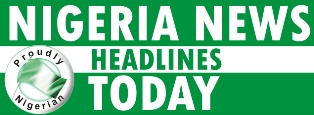Last year, Duke University Press published “Speculative Markets: Drug Circuits and Derivative Life in Nigeria” by Kristin Peterson, who teaches at the University of California, Irvine. It is a well researched book on the dynamics of Nigeria’s pharmaceutical markets. It seamlessly traces the connection between the Structural adjustment programme, SAP, and the collapse of the brand name pharmaceutical industry in the 19770s. Using Idumota in Lagos as a focus of her research, she reveals how some multinational drug companies, driven essentially by profit motives, conspire with desperate drug dealers in Nigeria to bring fake, substandard drugs and narcotics to the country in a way that is difficult to detect and stop. She spoke with KUNLE AJIBADE, Executive Editor of TheNEWS and PM NEWS on a recent trip to Lagos. EROMOSELE EBHOMELE transcribed the interview. IDOWU OGUNLEYE took the photos
Your book is a product of a vigorous investigation into what you describe as ‘’speculative practices” in the Nigeria’s drug market. How appropriate is this description of Nigeria’s drug markets? In the context of the drug market, you also describe Nigeria as a country of ‘’risky populations”. Could you expatiate on these two descriptions?
Kristin Peterson
Let me first take “risky populations.” In the 1970s, prior to the implementation of the structural adjustment programme, American and European brand name pharmaceutical companies saw the Nigerian population as buoyant purchasers. And, of course, at that time, the naira was at par with the dollar and the pound. There was a fairly robust middle class and people were able to afford many of the products produced by those corporations. But the moment the economy started to take a downturn after Babangida’s 1986 implementation of structural adjustment, many things changed. On the one hand, the private sector could no longer cope because the value of the naira was …Read More
Source:: PM Newspaper



